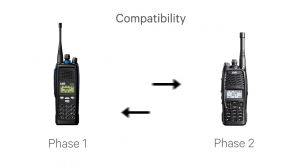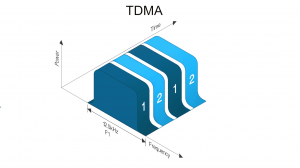Introduction to P25
P25 Standard
What is the difference between Phase 1 and Phase 2?
A question commonly asked is, “What is the difference between P25 Phase 1 and Phase 2?”
One of the original goals of P25 was spectrum efficiency. The radio spectrum is a limited resource. There are only so many radio channels that can be licensed in a given area.
Analog FM channels used to be 25 kilohertz wide. As the spectrum became more congested, narrowband channels were introduced. With the old 25kHz channels halved to 12.5kHz, the number of available channels effectively doubled if all users migrated away from wide band. P25 Phase 1 was designed to use the same bandwidth as a narrow band FM channel, meaning they could be used side by side, and narrow band FM channels could gradually be replaced by P25 digital channels.
Phase 2 is more spectrally efficient than Phase 1, providing two effective channels per 12.5 kilohertz bandwidth. In P25 Phase 2, each physical base station provides two effective voice channels. It does this by using TDMA, or Time Division Multiple Access, where two independent conversations share the same channel.
Another benefit of P25 Phase 2 is longer battery life. Because of the TDMA, the transmitter is only working half the time during a transmission, therefore increasing the battery life of the portable.
Phase 2 is backwards compatible with Phase 1 radios, allowing a new Phase 2 radio to operate with users of Phase 1 P25 equipment, and to operate on Phase 1 network equipment.
It’s important to realize that Phase 2 is currently only available for trunked P25 operation. For radio to radio and conventional P25 operation, Phase 1 is still used.
 Radio Academy
Radio Academy







